In 1999, NASA launched the Chandra telescope into orbit. Chandra’s mission is to detect X-ray emissions in space and to take images so that scientists can better understand our universe.
Chandra recently turned 25 years old, and to celebrate, NASA has released 25 jaw-dropping and never-before-seen images that Chandra has captured. All 25 of these pictures are absolutely beautiful and awe-inspiring.
The Chandra Telescope
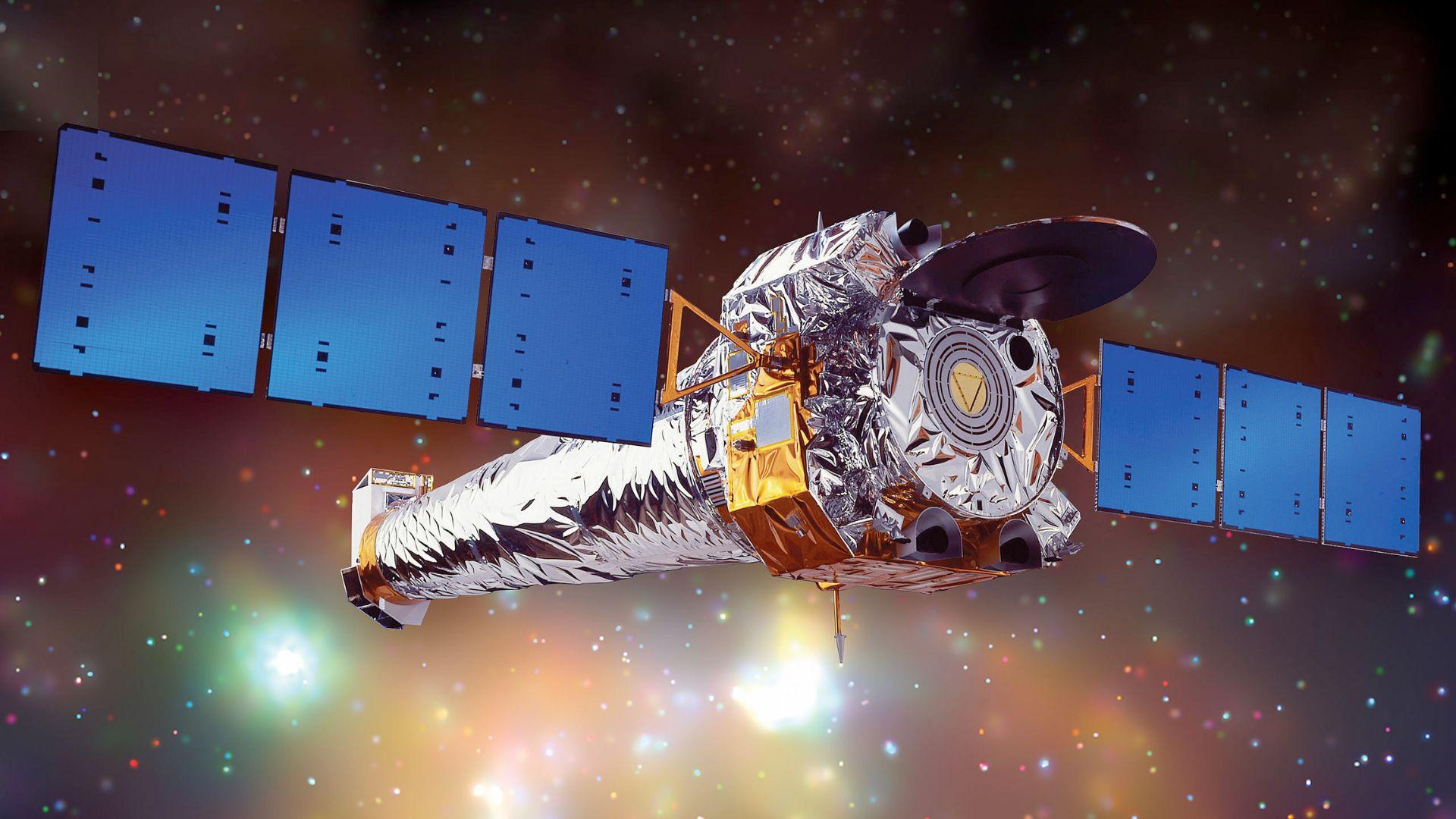
Chandra is a NASA telescope that is specially designed to detect X-ray emission from regions across the universe. These especially interesting hot regions include clusters of galaxies, stars, and matter surrounding black holes.
Chandra orbits high above the earth, so that any far-away X-rays are not absorbed by our atmosphere. It has been exploring our solar system and beyond for 25 years now. In celebration, NASA has released the following images that have never been seen by the public. These images help those of us who are fascinated by space (or at the very least, think that it can be beautiful) to better understand what Chandra captures.
A Difficult Journey
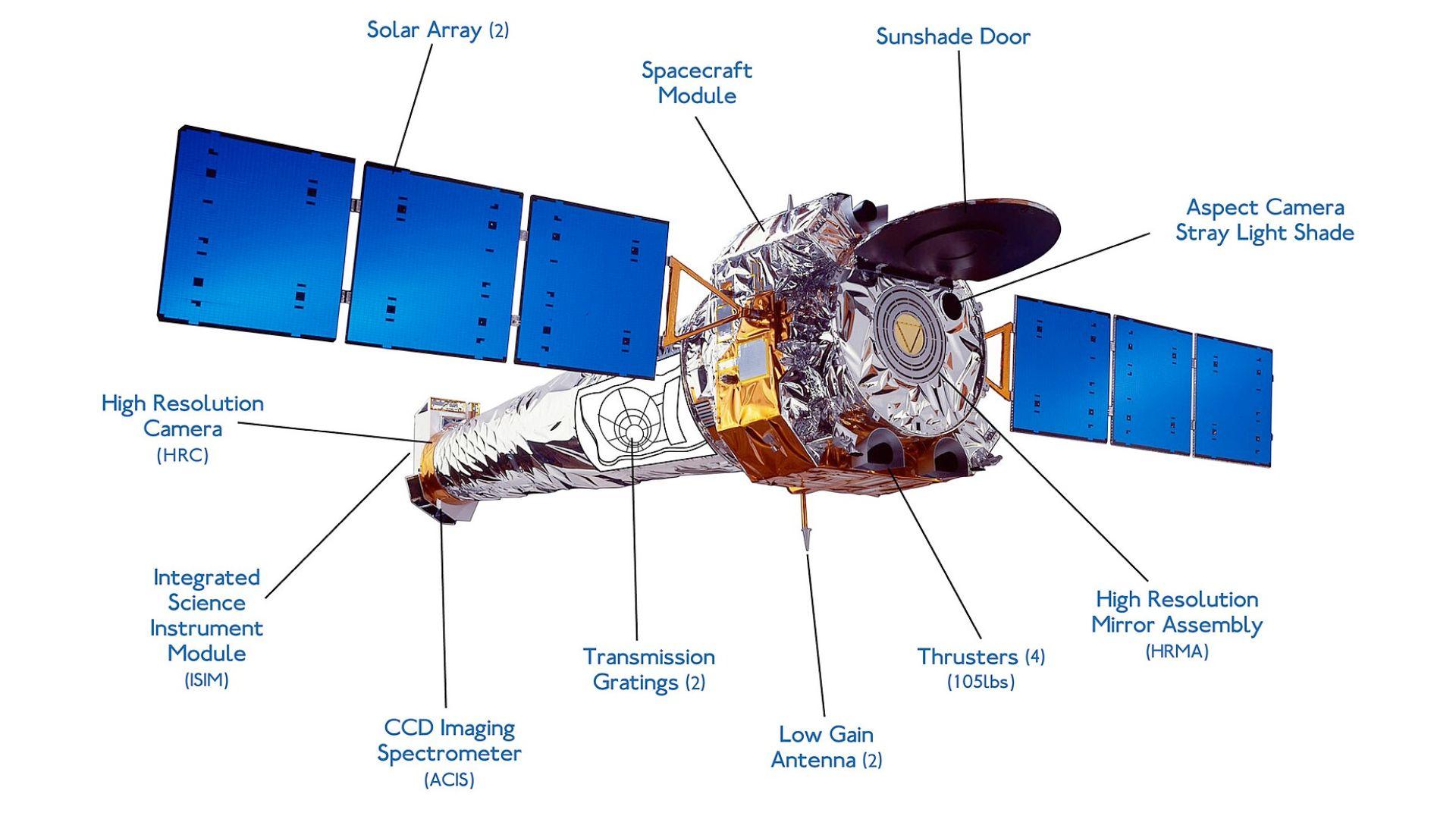
Chandra’s creation did not happen overnight. Riccardo Giacconi and Harvey Tananbaum, two astrophysicists, first proposed the idea to have a large X-ray telescope in space in 1976. Chandra finally began its orbit over two decades later. Chandra was launched in the same decade as three other telescopes—the Hubble and Spitzer space telescopes and the Compton Gamma Ray Observatory.
Only Chandra and Hubble remain in space and continue to be helpful for scientists. Chandra is a technological marvel: it features the highest-quality X-ray mirrors ever created, allowing it to capture exceptionally detailed images. This advanced technology is utilized to explore previously unknown aspects of space and the universe, including exoplanets and dark energy.
The Milky Way’s Galactic Center
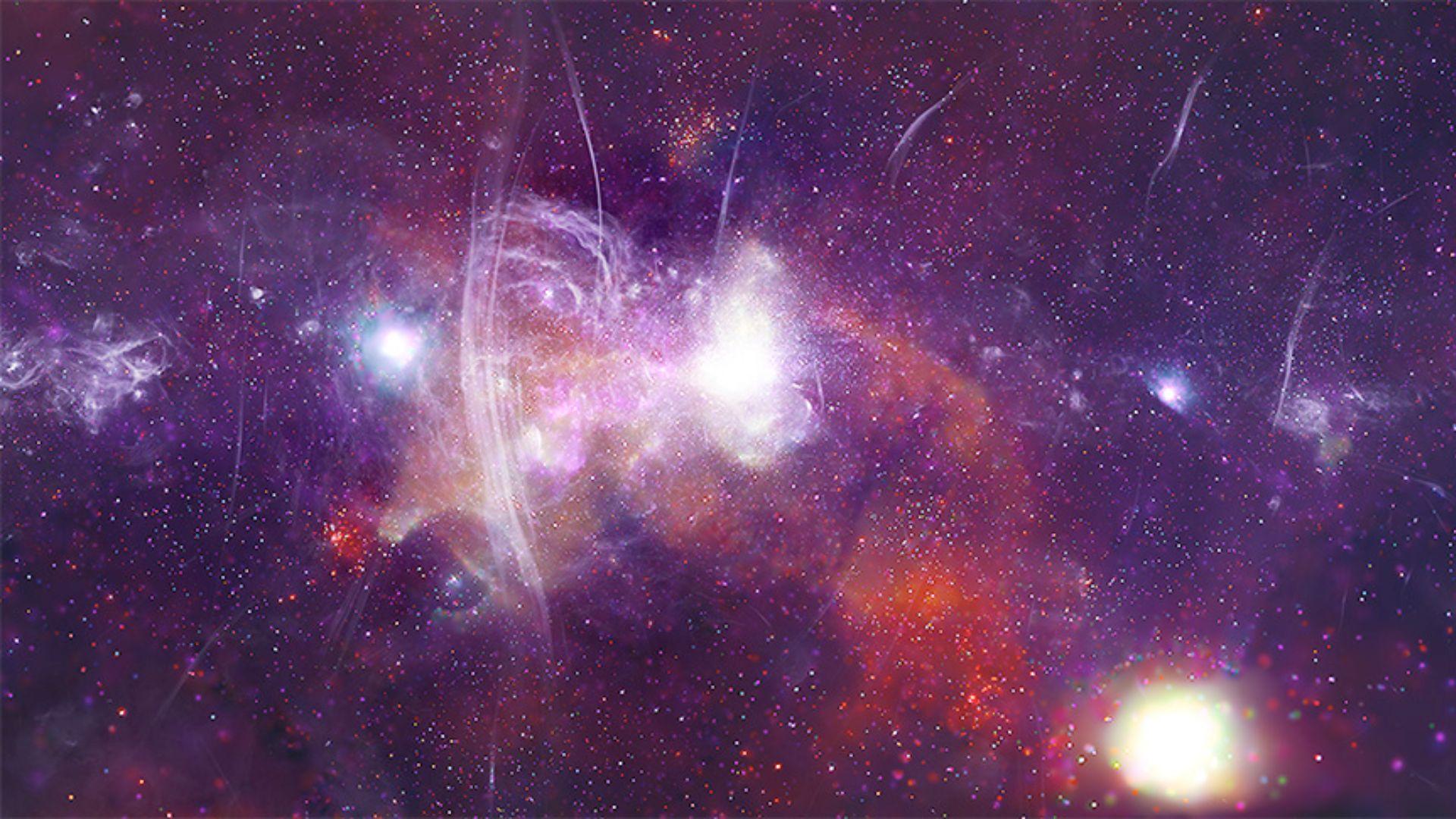
Chandra doesn’t merely detect an object, capture an image, and move on. Instead, it often dedicates thousands of hours to observing an object and taking a multitude of images to achieve the clarity needed for a detailed composite photograph.
For instance, it required 64 days and 370 separate observations spanning nearly 20 years to capture a clear image of the Milky Way’s center—a staggering 26,000 light-years from Earth. This beautiful image depicts the center of our galaxy, which is blocked by gas and dust in many types of light. However, X-rays can penetrate these barriers and reveal threads of stunning superheated gas and bursts from the Milky Way galaxy’s central supermassive black hole.
The Crab Nebula
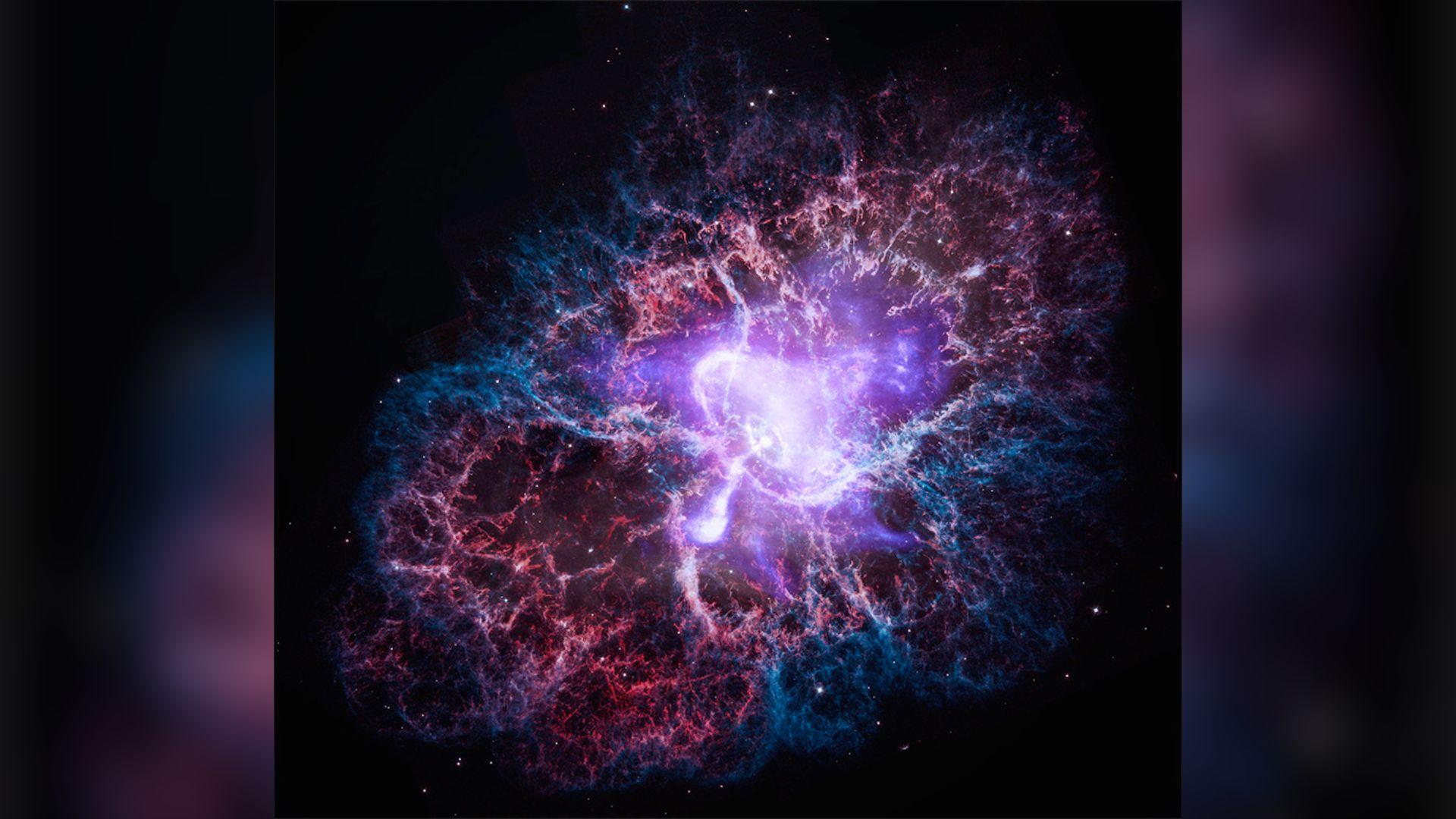
The stunning image of the Crab Nebula—which is located 6,500 light-years from Earth—was captured by Chandra after observing it at least 48 times between March 2000 and November 2013. The Crab Nebula was formed due to a brilliant supernova explosion that was actually observed by Chinese astronomers in 1054 A.D.
This image depicts the remnants of a supernova explosion. At its center lies a pulsar—a rapidly rotating neutron star that emits electromagnetic radiation. The white specks in the image are caused by particles expelled by the pulsar colliding with the surrounding gas in the nebula. This generates X-rays.
WR 124
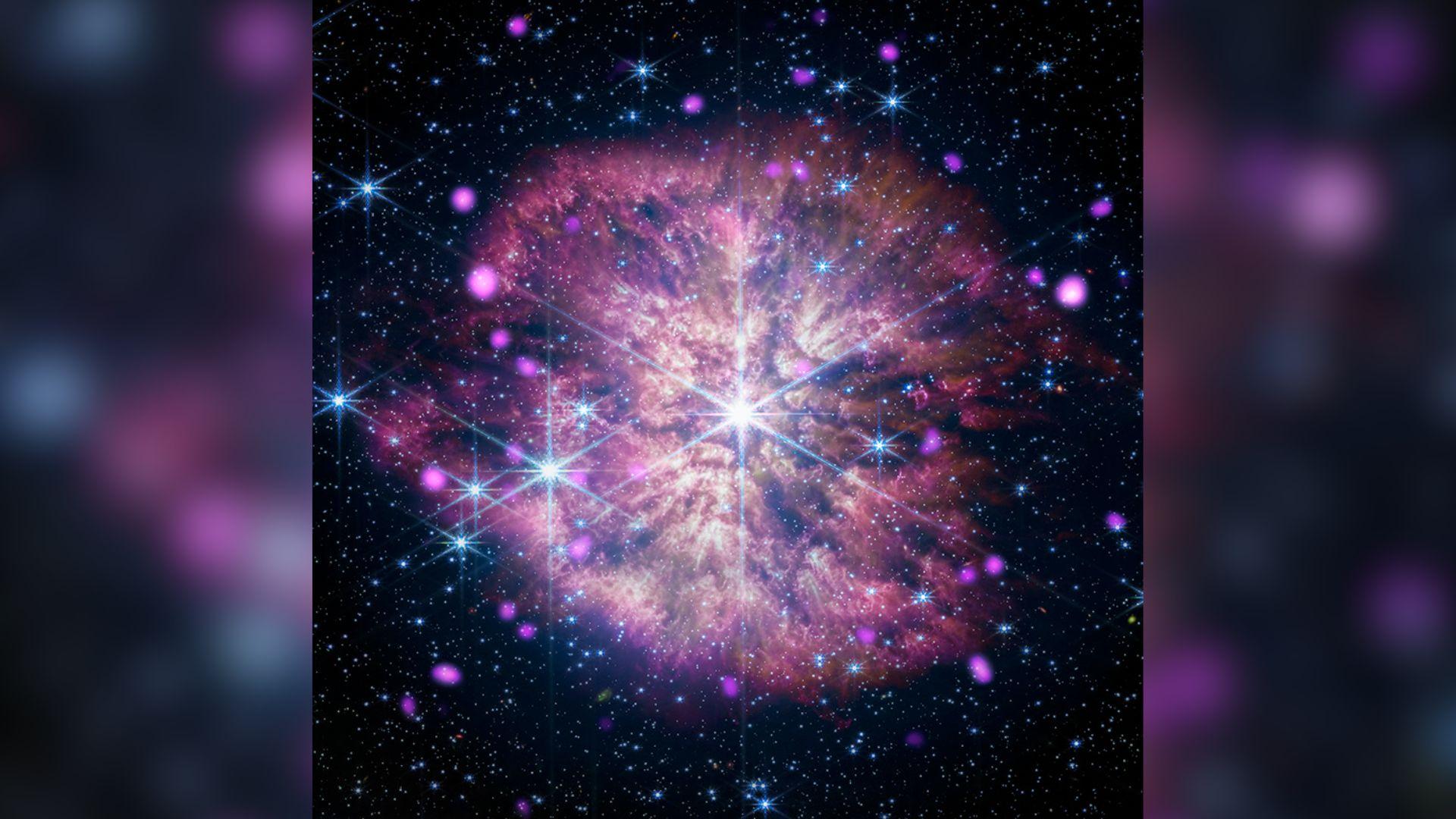
WR 124 is a rare type of Wolf-Rayet star. A Wolf-Rayet star is a bright, massive star that is currently experiencing a short-lived phase in its starry evolution. The star also gives off an intense wind.
WR 124 is dusty-rose-colored and gleams with diffraction spikes. It is surrounded by a churning wind cloud which is colored with reds and purples. WR 124 is surrounded by numerous bright stars, which appear in the image as white dots edged with neon purple and radiant white dots featuring cool blue diffraction spikes.
The Cat’s Paw Nebula
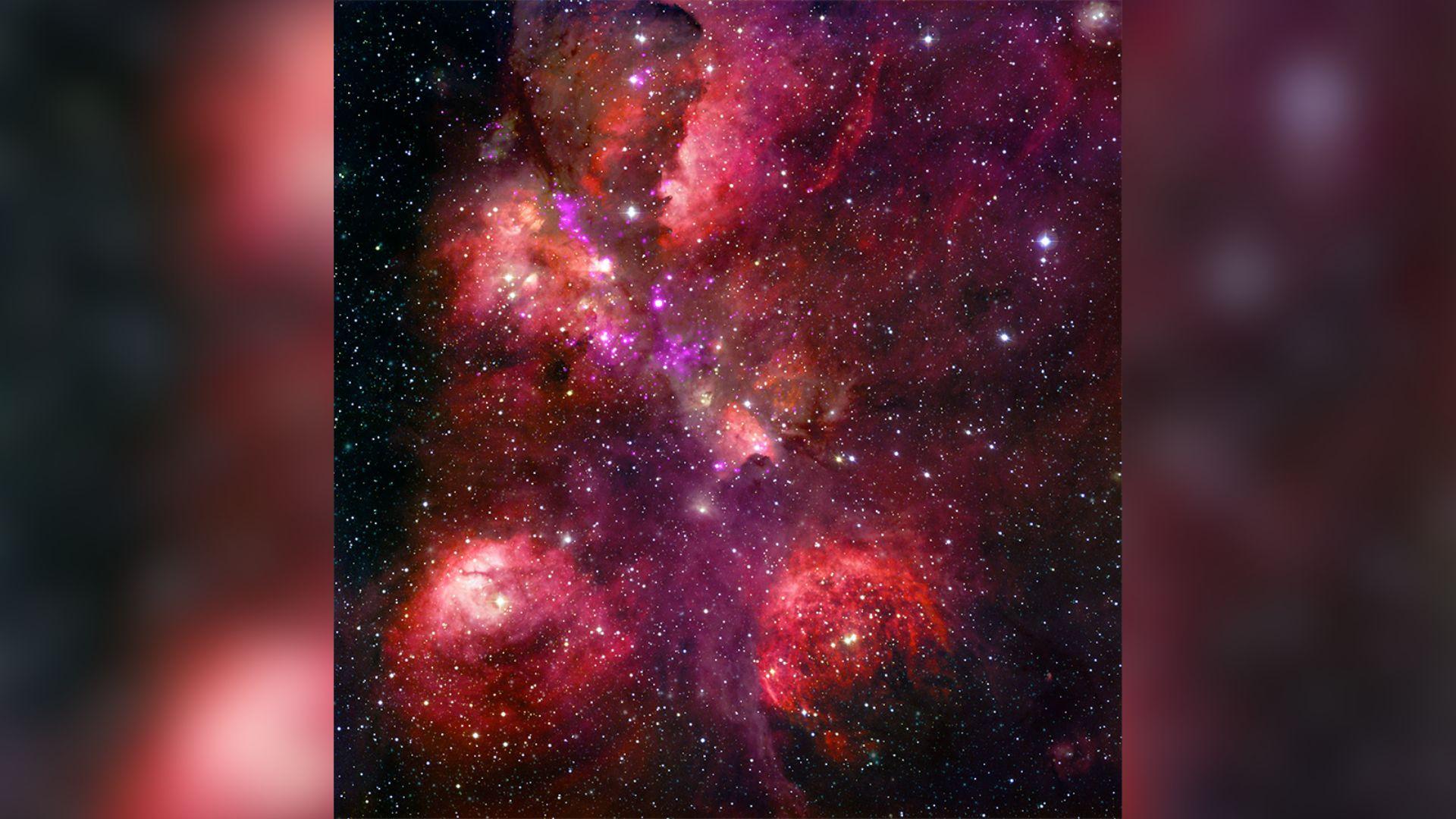
Does this nebula resemble the toes of a furry friend? Apparently scientists seem to think so. The Cat’s Paw Nebula is a vibrant star-filled region within the Milky Way. It is characterized by its unique reddish cloud-like clusters which are connected by delicate purple starry streaks.
Among the multitude of stars in the Cat’s Paw Nebula, the brightest ones are found at its center. The image was captured from a distance of approximately 4,370 light-years from Earth. It may not resemble a cat’s paw, but I’m sure some cats would be fascinated by its laser-like colors and sparkly specks.
The Virgo Cluster
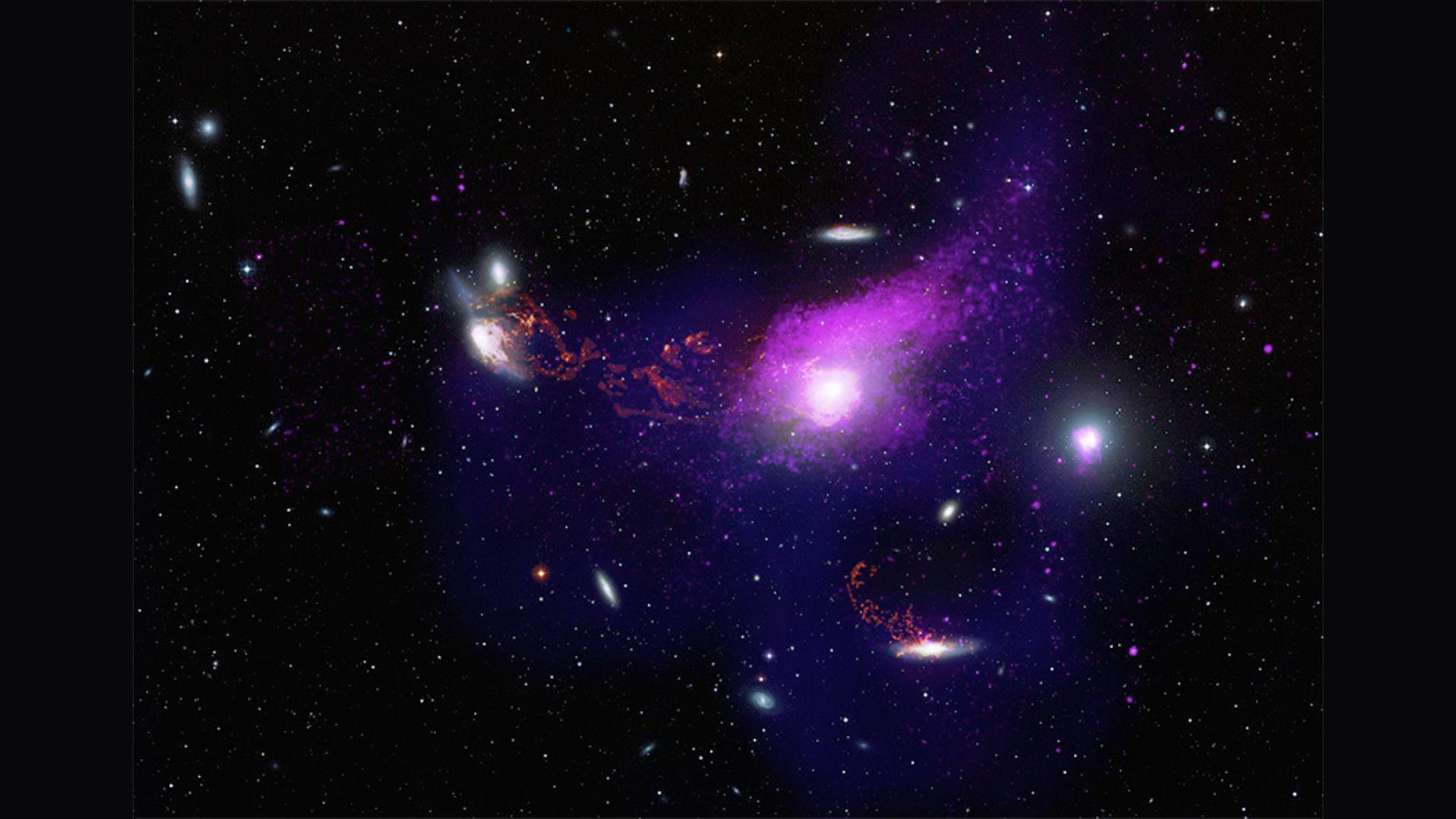
This image portrays the amazing Virgo Cluster of galaxies and the M86 galaxy quickly traveling through it. The image features approximately one dozen galaxies which are set against a star-speckled black space backdrop.
The large white and pink dot that is surrounded by a neon purple streak is the M86 galaxy. This galaxy is traveling through the Virgo Cluster at about three million miles per hour. The neon purple streak represents the hot gas that Chandra has detected. M86’s hot gas is being pulled from the traveling galaxy as it collides with other hot gasses in the present in the cluster.
Cassiopeia A
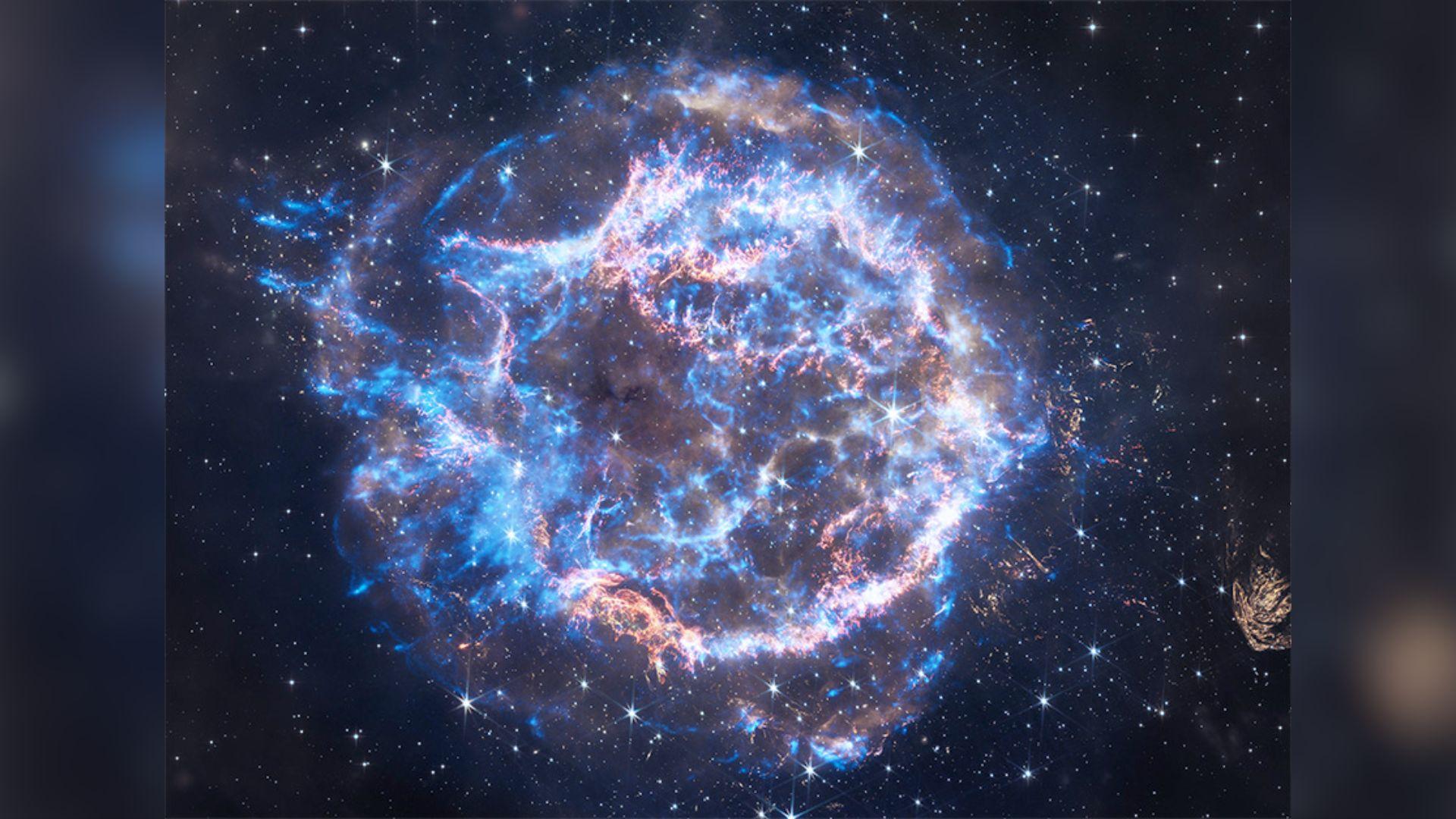
Another remarkable image captured by Chandra and unveiled by NASA depicts Cassiopeia A. Since the beginning of the Chandra mission in 1999, the Cassiopeia A supernova remnant has been observed for over 2 million seconds. Cassiopeia A is a colossal explosion of matter and energy expelled from a supernova star.
In the image, Cassiopeia A is seen with neon-blue and white rings interspersed with golden streaks. Chandra’s observations also reveal the remnants of the exploded star and the resulting shockwave from the explosion.
NGC 1365
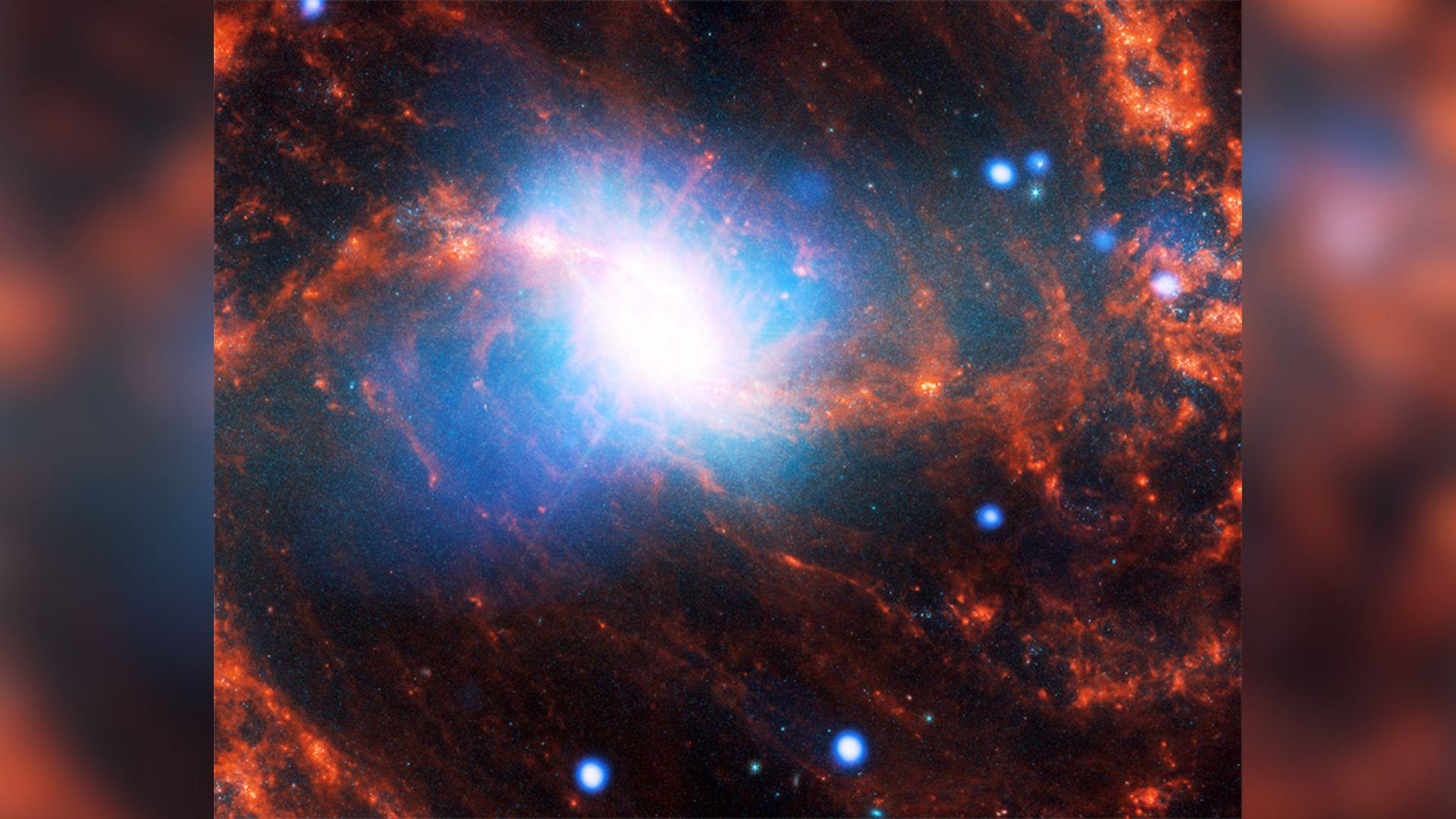
NGC 1365 is a striking spiral galaxy that harbors a supermassive black hole at its core, where intense star formation is taking place. Chandra has captured X-rays emanating from the gas surrounding this colossal black hole, as well as from smaller black holes in its vicinity.
In addition to this, Chandra is capable of detecting neutron stars that pull material from their companion stars. The image reveals the central black hole glowing brightly, surrounded by red spiral arms and scattered light blue dots.
The Eagle Nebula (M16)

The Eagle Nebula is relatively famous among the general public. Its star formation region contains the Pillars of Creation, which was glorified by the Hubble Space Telescope. Chandra has detected X-rays from young stars in the Nebula’s region.
The Pillars of Creation are tall columns of gray gas and dust, which can be seen emerging from the bottom-left edge of this image. The cloudy gray columns are surrounded by many beautiful glowing dots in whites, blues, reds, yellows, and purples. These dots are young stars which emit X-ray and infrared light.
NGC 6872
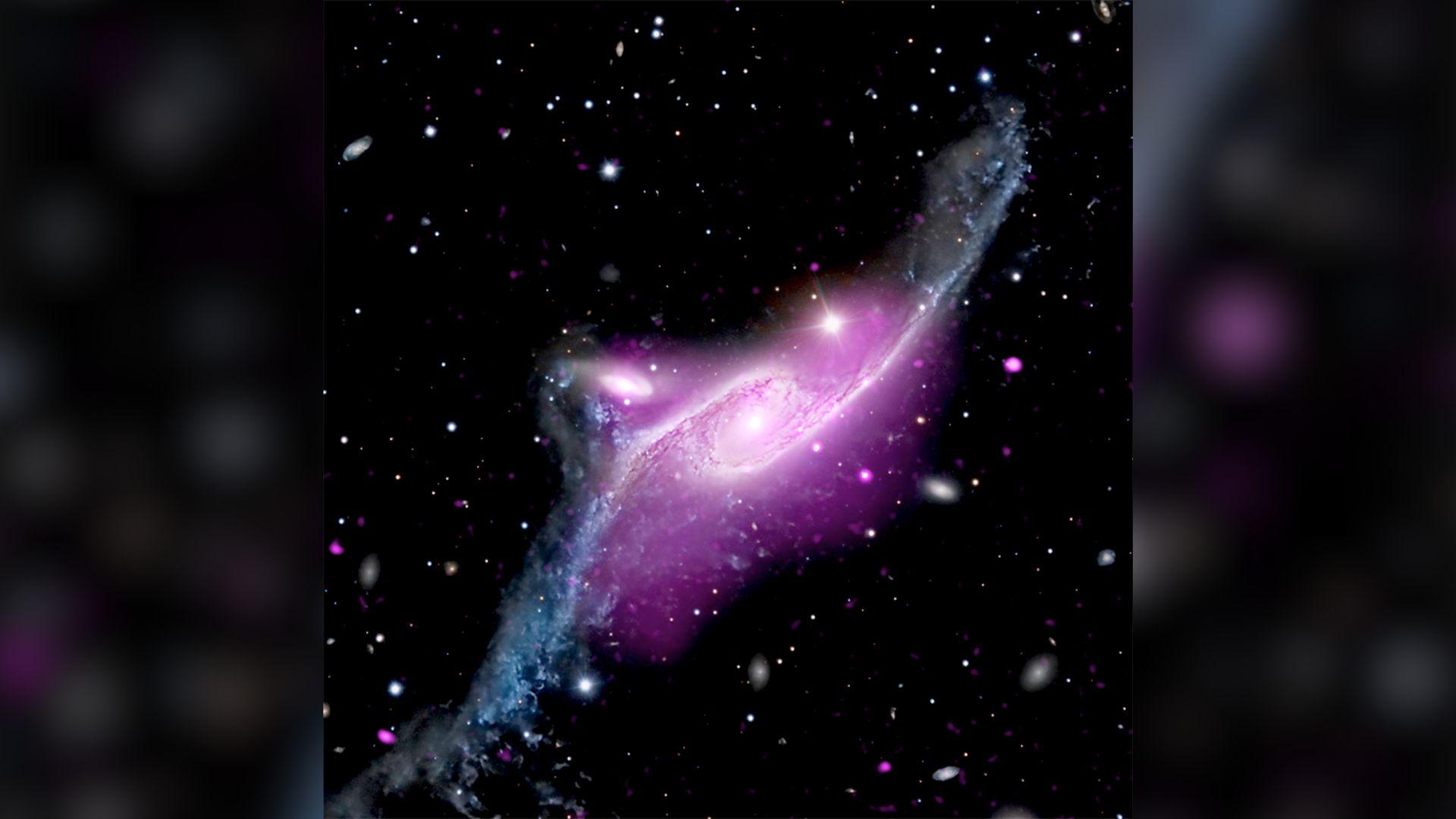
NGC 6872 is a barred spiral galaxy that is interacting with a smaller galaxy to its upper left. The smaller galaxy has likely collected gas from NGC 6872 to feed its supermassive black hole.
A cloud of neon purple tints NGC 6872’s arms, which face to steel blue at the tips. To the upper left of NGC 6872 is a second, and much smaller spiral galaxy. The bright white dot at its core is quite large which suggests a supermassive black hole. Therefore, the matter that is being pulled from NGC 6872 is likely being pulled toward the smaller galaxy’s supermassive black hole.
SN 1987A
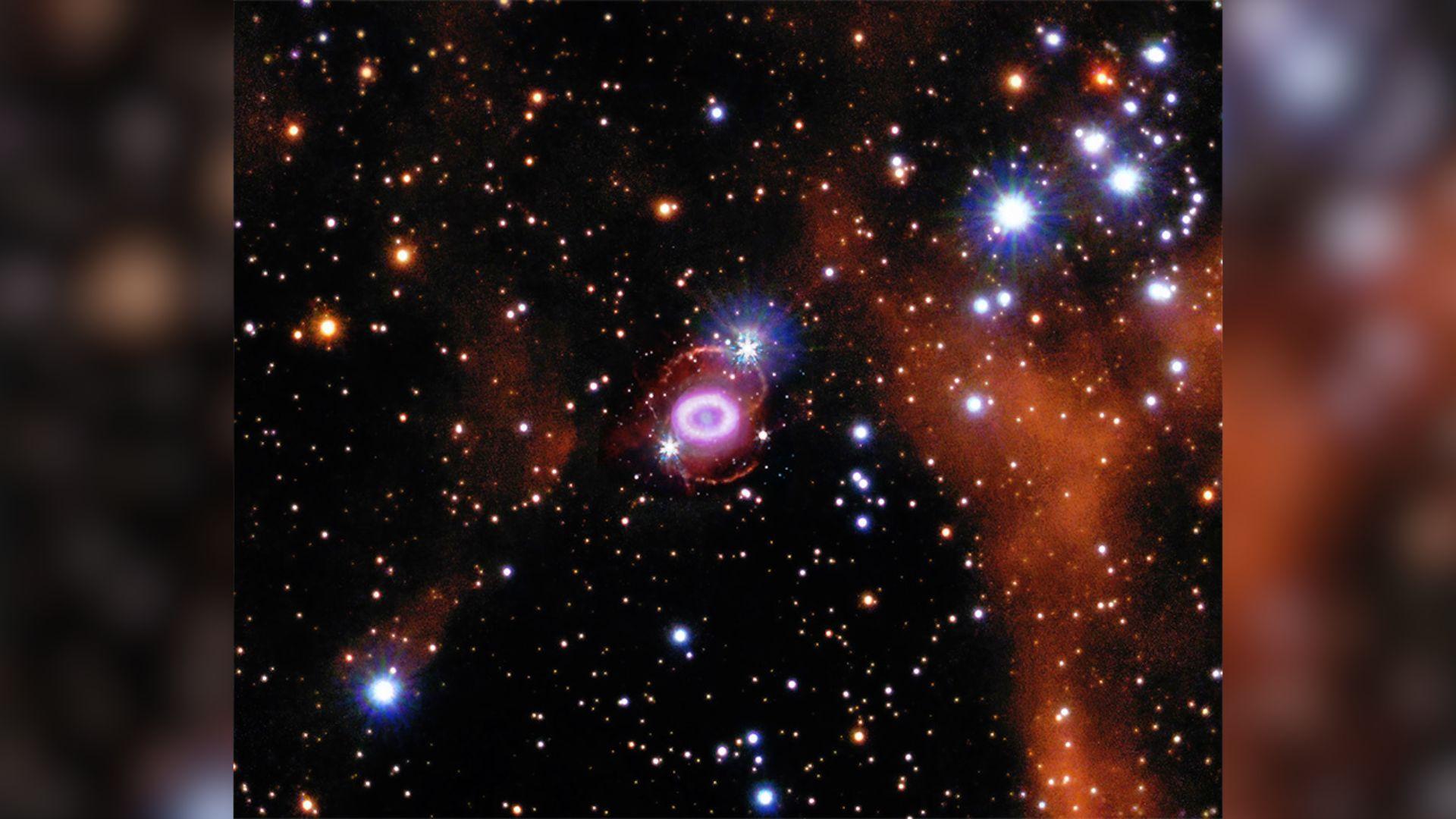
In February of 1987, scientists first observed the supernova explosion that created this beautiful space object. Chandra’s X-ray observations are capable of detecting remnants of the explosion.
In the center of the image, within the vast Magellanic Cloud, is a small, glowing pink circle. Inside this pink ring is a pale blue dot which contains debris from the exploded star. This circle signifies the ejected material from thousands of years prior to the explosion.
Jupiter

Images of the planets within our solar system have been available for years, but this picture of Jupiter is especially interesting. Jupiter is the fifth planet from the Sun and largest in the Solar System. It is known to have X-ray-producing auroras around its poles.
The image depicts Jupiter against the dark expanse of space, encircled by vibrant neon purple blobs. Chandra has also captured the swirling gas around Jupiter, which can be observed as the light blue ring surrounding the planet.. The purple hues in the image represent the aforementioned X-ray auroras, which are formed when high-energy particles collide with the gas in Jupiter’s atmosphere.
Chandra in Jeopardy
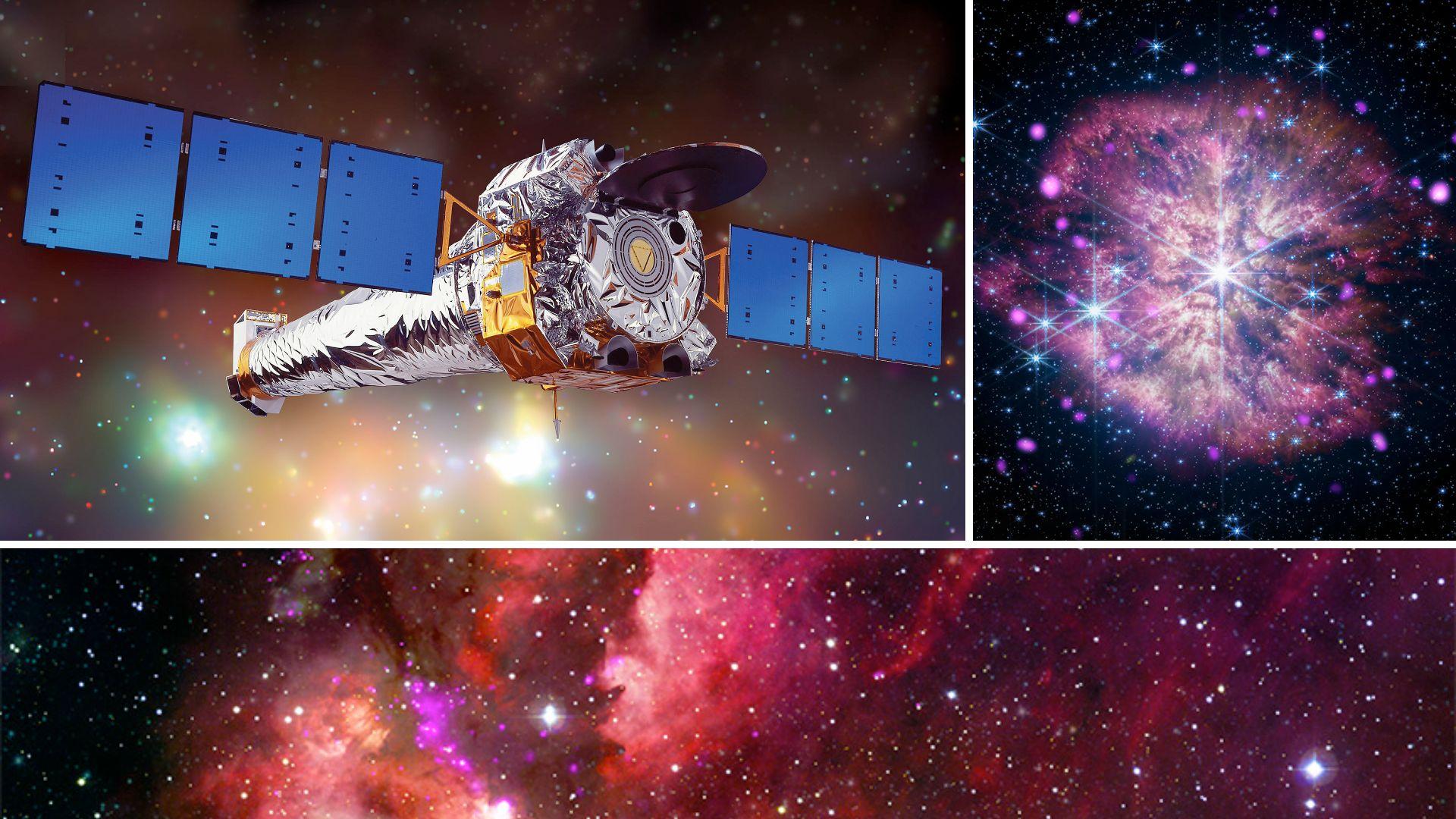
Despite capturing countless stunning images, Chandra’s future is uncertain. After 25 years of operation in space, the telescope faces potential jeopardy due to NASA budget cuts.
There is growing concern that these financial constraints could end Chandra’s mission before the decade concludes. If this occurs and no replacement telescopes are launched, it could significantly impact the future of astronomical research. We can only hope for Chandra’s future endeavors and fortunately, we have just gained access to a beautiful library of images…25 images to celebrate 25 years of Chandra.
If you’d like to see all 25 of the images, you can visit Chandra’s website here.

